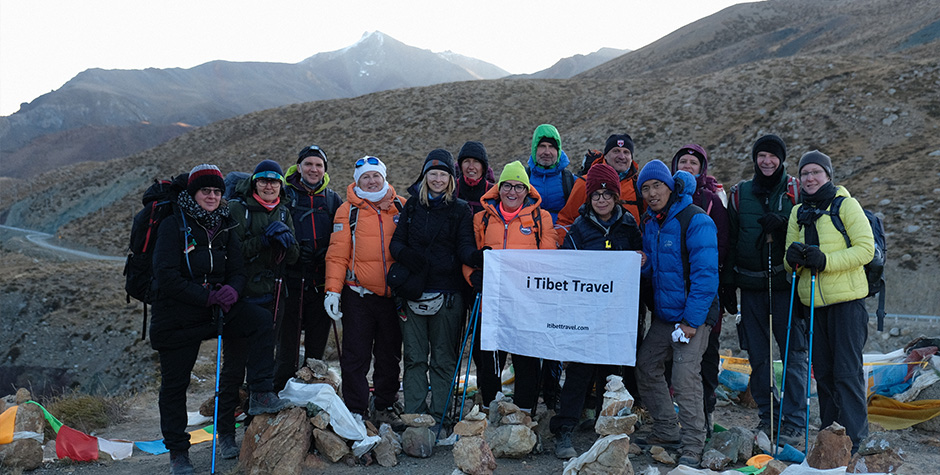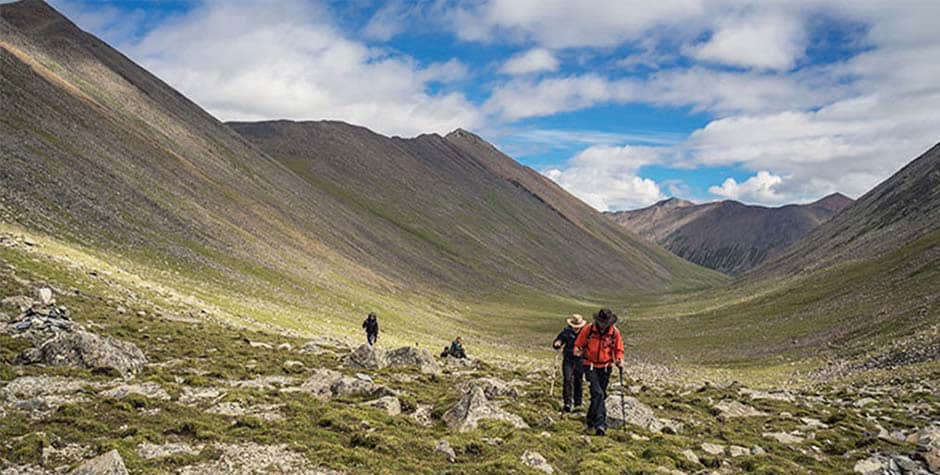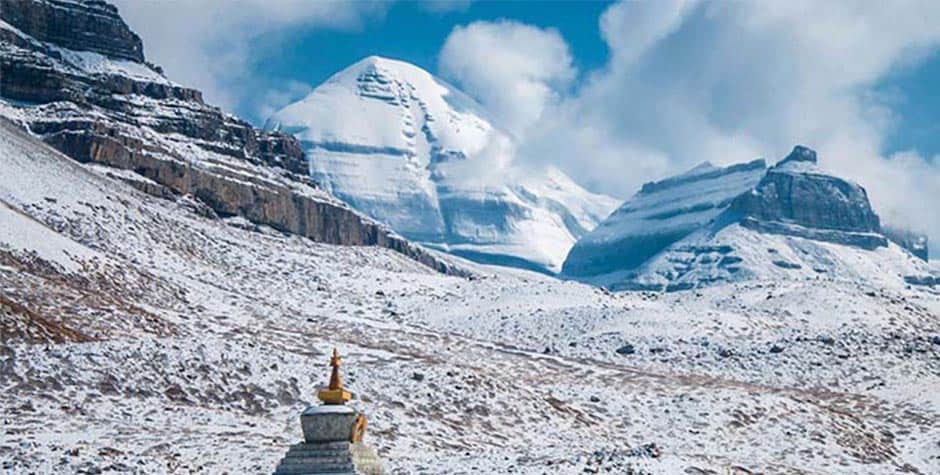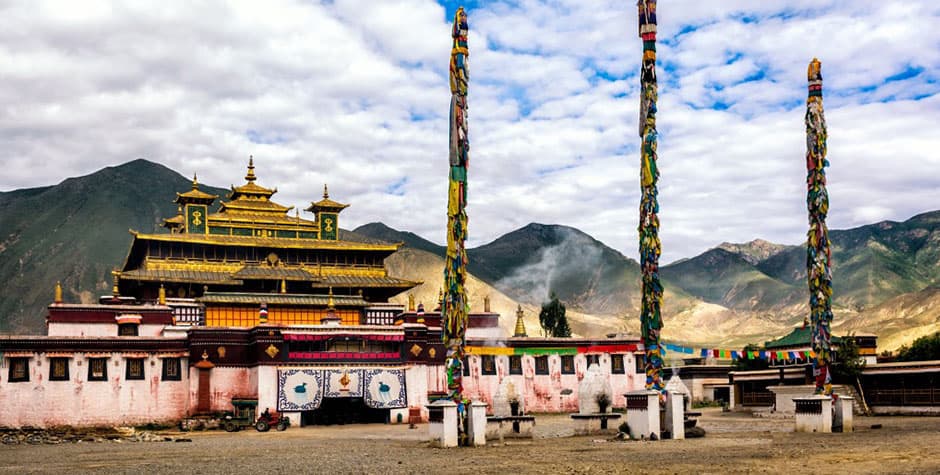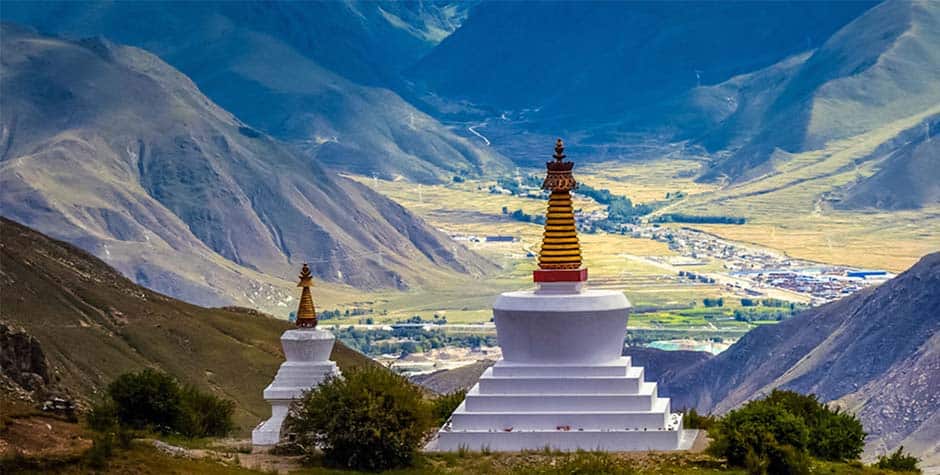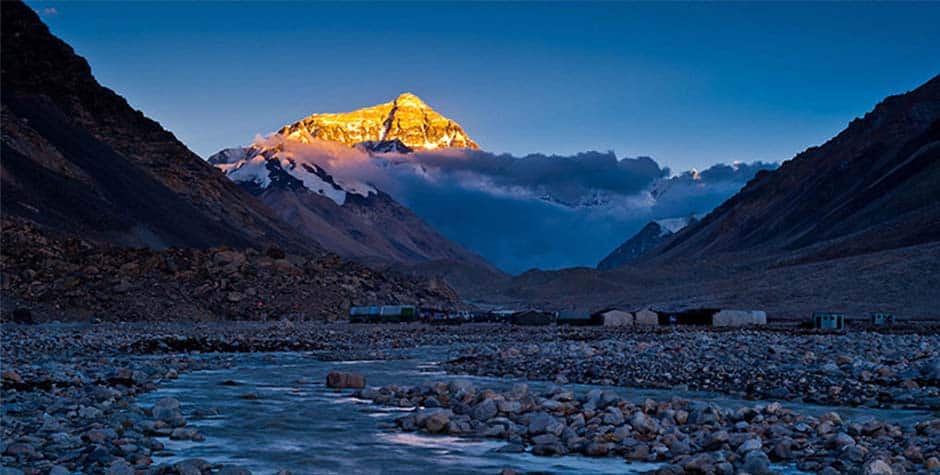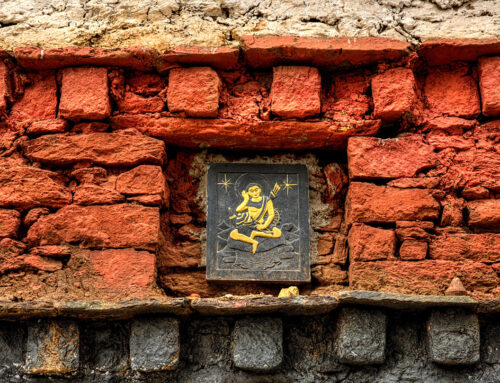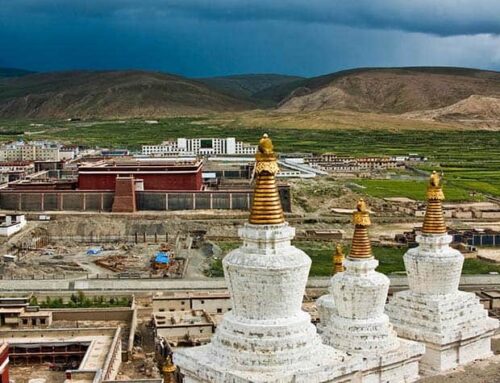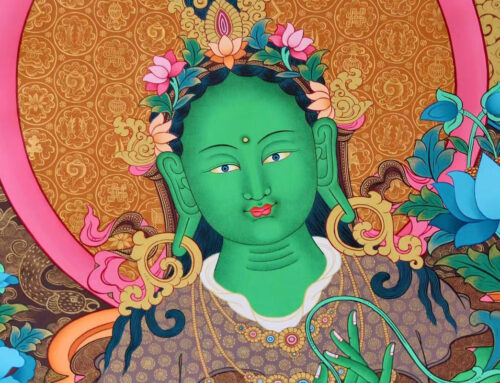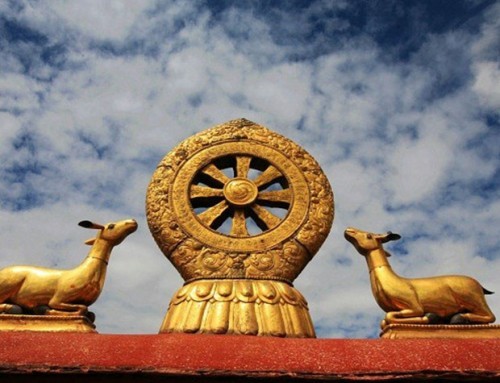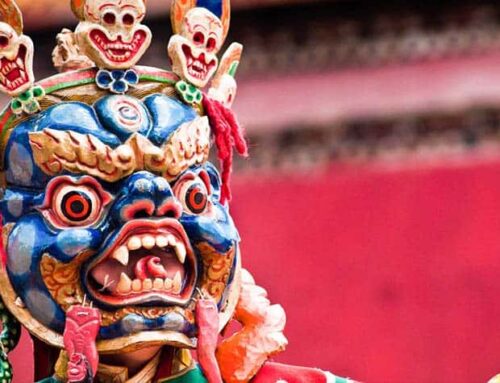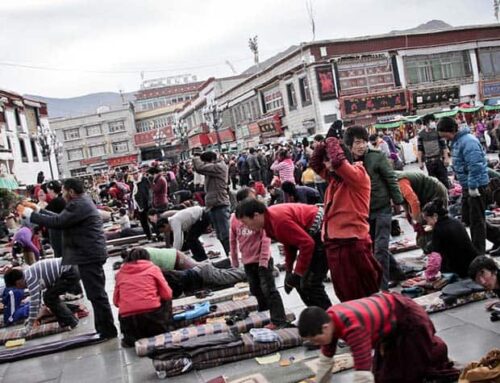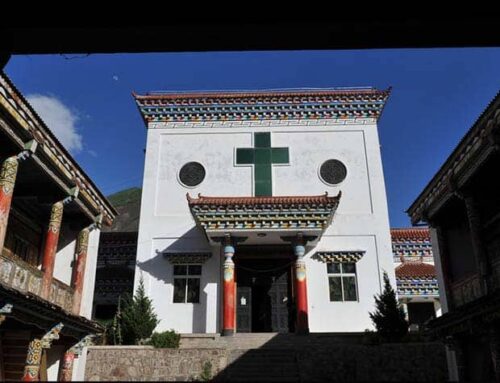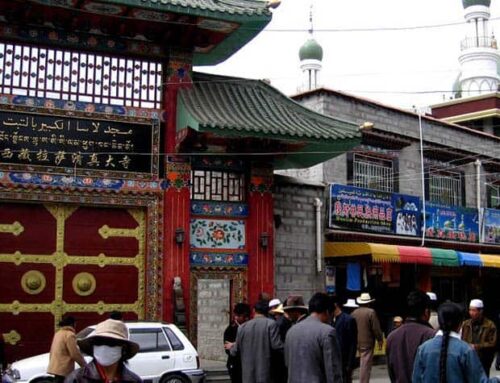The root master of all the Tibetan Buddhist lineage is the teaching of Buddha.
Buddha was the prince of the Skaya Clan. His teaching is root in an observation: Despite all the effort to find Happiness and avoid suffering. Life is full of despair and dissatisfaction. He recognize the cause of all suffering as the dissonant mental state- envy, pride, delusion, and attachment. He learns it is possible to free oneself permanently from such suffering through rigorous and well-structured training in ethics, meditation, and insight, which lead to the profound understanding of the way things are, enlightenment.
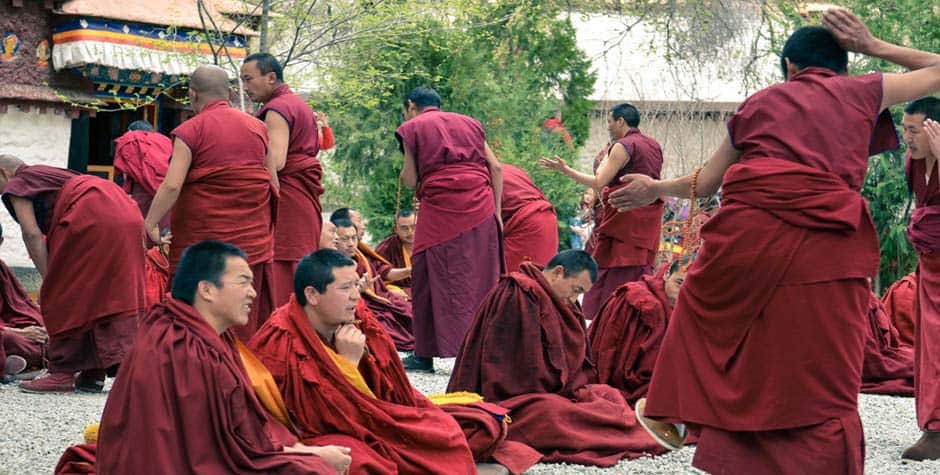
A Buddhist takes refuge in Buddhism’s three jewels: Buddha (the teacher), Dharma (his teaching), and Sangha ( the monastic community).
History of Tibetan Buddhism
In the 7th century, the prime ambition of the first emperor of the Tibetan Empire, the Tibetan King Songtsen Gampo, was to unify Tibetan inhabitants in the Tibetan Qinghai Plateau and modernize his empire in terms of life and technology. He has many cultural and craft items import from the neighboring states.
Tibetan Food from the Tang Dynasty and other regions of modern China, Tibetan clothes from the Mongols, and spirituality from India. Buddhism must be brought into Tibet to help tame the wild nature of Tibetan inhabitants. We are said to be a warrior clan and would always love to fight a lot.
His most significant accomplishment in Tibetan Buddhism is bringing two of the holiest Buddha statues in the world to Lhasa. One is from the Tang dynasty, and the other is from Nepal. He built two temples in Lhasa to house these two statues.
Tibetan king Trisong Detsen
Later in the 8th century, Tibetan king Trisong Detsen finally establish Buddhism as the official religion of the Tibetan empire. He built the first Buddhist Monastery, Samye Monastery, in Tsedang and establish the first school of Tibetan Buddhism, Nyingmapa, with the help of Guru Padmasambhava. The Nyingmapa school mainly focused on the practice of Tantric Buddhism.
Langdharma
During the reign of the Last King of the Tibetan Empire, Langdharma, he strongly persecute Buddhism and forced everyone to abandon it. Buddhist practitioners assassinated him. After this, Tibet disintegrat into local rulers. This period is known as the dissemination period.
Second dissemination of Buddhism
Later, the king of the Guge Kingdom invited Atisha to rejuvenate Buddhism in Tibet. Atisha also travel to central Tibet and start the new Tibetan Buddhism school call Kadampa. Later, many individuals put their efforts into going to India to learn the language, study Buddhism, and translate Buddhist scripture into the Tibetan language. Two major schools, SakyaandKagyu, were start by the students of such translators.
Je Tsongkhapa and Gelugpa
In the 14th century, Je Tsongkhapa started a new school of Tibetan Buddhism with insight into the teachings of Kadampa and other traditions. The Gelug later became the most powerful sect in Tibetan Buddhism and ruled Tibet for many centuries under the institution of the Dalai Lama and Panchen Lama.
From the period of rejuvenation of Buddhism in Tibet to the fifth Dalai Lama, there have been many conflicts between the different sects of Tibetan Buddhism over influence and power. Many times, other sides have sought the help and military aid of the Chinese Yuan dynasty.
Unique Practice in Tibetan Buddhism
Tibetan Buddhism has developed some unique features not typical of traditional Buddhism in India. The primary influence is the adaptation from the Native Bon religion and Tibetan Culture.
Institution of Reincarnation
One of the most important developments of Tibetan Buddhism is the institution of reincarnation. As Buddhists, we believe in life after death. Our next life will be determined by how we live. With this concept of the next life, the highly realized spiritual being can choose when, where, and in what form to take a rebirth. Ordinary folks like us can’t decide what form of life we want to reincarnate. It purely depends on one’s Karma.
We believe all the high lamas are manifestations of bodhisattvas, who vow to help liberate all sentient beings. To continue assisting, all these high lamas would return repeatedly to help liberate everyone from the ocean of suffering. The first lama to choose to reincarnate is the Karmapa of Kagyupa. In the coming days, the institution of reincarnation will be adopted into all the different schools of Tibetan Buddhism.
Adaptation of Native Bön practice into Buddhism
In Tibetan Buddhism, many native elements are adopt from the local Bon religion. Adaptation was necessary, and it is the main reason why Buddhism in Tibet was so successful. The most common form of adaptation was the ritual dance of Cham, Prayer flags, praying wheels, sky burial, and Ritual music in the monasteries.
Different sects in Tibetan Buddhism
Unlike other forms of Buddhism worldwide, Tibetan Buddhism has many different schools or sects. There are four major sects in Tibetan Buddhism. The oldest one is Nyimapa, and the newest one is the Gelugpa.
Each school differs in terms of its ways and approaches to enlightenment. However, all the schools have the same common root teacher, the Buddha himself, and his teaching.
Followings are Four major sects in Buddhism in Tibet
Nyingmapa (རྙིང་མ།)
The word Nyingma means the old one. Padmasambhava found the school of Tibetan Buddhism with the establishment of the first Tibetan monastery of Samye.
Sakyapa(ས་སྐྱ་)
The word Sakya means pale earth. The name was adopt after the unique grey landscape of Ponpori Hills in southern Tibet, where the first monastery was built for the school. This school was found by the…..
Kagyupa (བཀའ་བརྒྱུད་)
The word Kagyu means oral lineage. The tradition of Kagyupa start in Tibet by Marpa Lotsawa and his student Milarepa. Within the Kagyu, there are four major schools and eight minor schools. Kagyu is…
Gelugpa (དགེ་ལུགས་པ་་)
The word Gelugpa means the way of Virtue. It is also known as the yellow hat sect. This school was founded by Tsongkhapa based on the traditions and teachings of the Kadampa tradition, which currently has the most followers.
Other Aspect of Buddhism
Tibetan Yoga
Tibetan Yoga practice is called Luejong, meaning training of the body. It is an essential part of the path of spiritual practice and complementary to the training of the mind called Lojong. To practice and meditate…
Tibetan Singing Bowl
The existence of singing bowls dates back to the time of Buddha. This tradition was brought to Tibet from India, with the teaching of Buddha by the great tantric master Padmasambhava, who successfully started the Institute of Tibetan Studies.
Butter Lamp
When you travel to Tibet, you will often find a butter lamp as an offering of light in a personal altar in the home, temples, and Monasteries. Offering light to the statues of the Buddha and the bodhisattvas is said to bring us positive virtue.
Prayer Wheel
When you travel to Tibet, you will often see the Tibetan Prayer wheel, whether mounted on the wall surrounding the Temples, handheld, installed on the hilltop, circulating on wind energy, or fitted on the river bed.
Kora, the circumambulation
Kora, or the circumambulation of a holy object, person, or place, is an essential part of daily life in Tibet and one of the most visible Tibetan Buddhist rituals you will see while travelling there.
Prostration
When you visit Lhasa or Tibet, you will see lots of people prostrating, either on the circumambulating path of Bakhor, in front of Jokhang temple, or Potala Palace. Many visitors do have an idea…
Meditation
Meditation gives profound rest. It is a movement in which the practitioner just sits and enables the mind to disintegrate. Truthfully, meditation is not concentration. It is de-concentration.
Wheel of Life
The Buddhist wheel of life, or Bhavacakra, is one of the most important paintings in Tibetan Buddhism. The initial drawing was design by Buddha himself. Buddha really encourage this painting to be painted.
Tibetan Buddhist Stupa
Tibetan Buddhist Stupas are very attractive to travellers in Tibet. Many of our visitors are asking questions about the different shapes and forms of Stupas we have in Tibet. Today, we are willing to share this information.
Tibetan Cham Dance
Tibetan Cham Dance is a ritual dance in Monasteries during special occasions like festival and Teachings. This religious dance is performed only by monks. The ritual is performed for moral instruction to viewers, destruction of…
Tibet Spiritual Tours
Read more about Tibet Travel Information and Tibet Tours.
Tenzin Travel is one of Tibet’s most experience tour operators, with over 20 years in the industry. Founded by a local Tibetan family with decades of expertise as guides, managers, and route planners, we craft personalized itineraries for every traveler.
Our Lhasa office is just steps from Barkhor Square, and our all-Tibetan team ensures deep cultural, linguistic, and religious insights, setting us apart from other agencies.
Beyond tourism, we support Tibetan communities by donating a portion of each tour to local projects. Your travel to Tibet is about more than profit—it’s about opportunity for us to give back.

